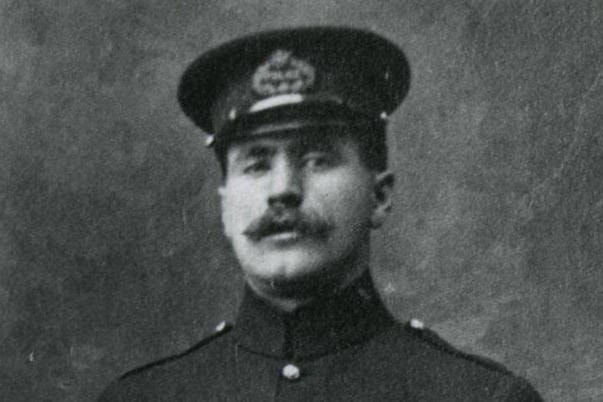There has recently been considerable debate as to whether Red Deer should create a city police department, replacing the long-standing contract with the RCMP to provide municipal policing services. What is often forgotten is, for many years, Red Deer had its own police department.
The career of Red Deer Police Chief Charles Anderson provides some indication of the benefits and challenges of having a city police force.
The Red Deer Police Department was created in 1901, shortly after the community was incorporated as a town. Originally, it was a very small operation with only one or two constables and only basic equipment.
Red Deer started to grow very rapidly in 1905. Charles Anderson, originally from Kinnetless, Scotland, was one of the newcomers. He soon got a job with the public works department.
With the population of Red Deer soaring, the police department was rapidly expanded. Anderson became one of the new constables. He and his fellow officers had their work cut out for them. The number of criminal cases jumped from 35 to nearly 250 in two years.
The police department faced a number of challenges besides the escalating crime rate. It was a challenge to quickly find good men to hire. Those who were hired often lacked proper training.
Discipline in the police department was a serious issue. In February 1912, two constables had to be fired after they pulled their revolvers on each other during an argument in a bar. In 1913, after a late night brawl at a local restaurant, city council fired the police chief.
Charles Anderson, who had risen to the position of deputy chief, had already left Red Deer to take the position of chief constable in Strathmore.
With the chief’s position suddenly becoming open in Red Deer, he was persuaded to return and take on the job.
He soon got better control over the department, in part by letting the troublesome constables go. However, he still faced severe problems. When the great boom broke, city council began to lay off members of the force for budgetary reasons.
With the outbreak of the First World War, constables began to quit to enlist. Anderson himself enlisted in the 187 Battalion in June 1916. City council decided not to permanently fill his position, but rather, to appoint interim chiefs. That assured Anderson his job would be waiting for him when he returned home, but it also helped the city save more money.
When Anderson returned from overseas, he resumed his position as police chief. However, the economy was shattered by the war. Several social problems also arose, including the enforcement of the Prohibition laws on alcohol.
The city veered towards bankruptcy. Taxes were hiked, but arrears soared. There were more layoffs of city staff, including members of the police department. Wages were slashed. Nevertheless, the situation kept getting worse through 1922.
In 1922, the situation with the police department reached a crisis point. Some councillors wanted to see if the Alberta Provincial Police could take over most of the city’s policing operations. More layoffs and salary cuts were proposed.
Anderson already faced growing criticism over his strong enforcement of liquor laws and the rules on such controversial businesses as pool halls.
Finally, he had enough and got a new job as the police chief in Fernie, B.C.
Anderson was very popular with the general public. City council faced a real backlash over its previous criticisms of his performance. Pressure was put on council to do whatever was needed to keep Anderson in Red Deer.
He was offered a big increase in salary, but declined as that would cause problems with others who were still facing pay cuts. He tried to be diplomatic about his relationship with some members of city council. However, he finally let it be known he was quite hurt by complaints for doing his job properly, instead of “going easy” on some prominent people.
Anderson left. A.T. Streatfield of Nanton was hired to take his place. City councillors continued to feel the backlash of “letting a good man go.” The morale of the remaining city police, which was back down to a couple of constables, remained very low.
Red Deer historian Michael Dawe’s column appears Wednesdays.
